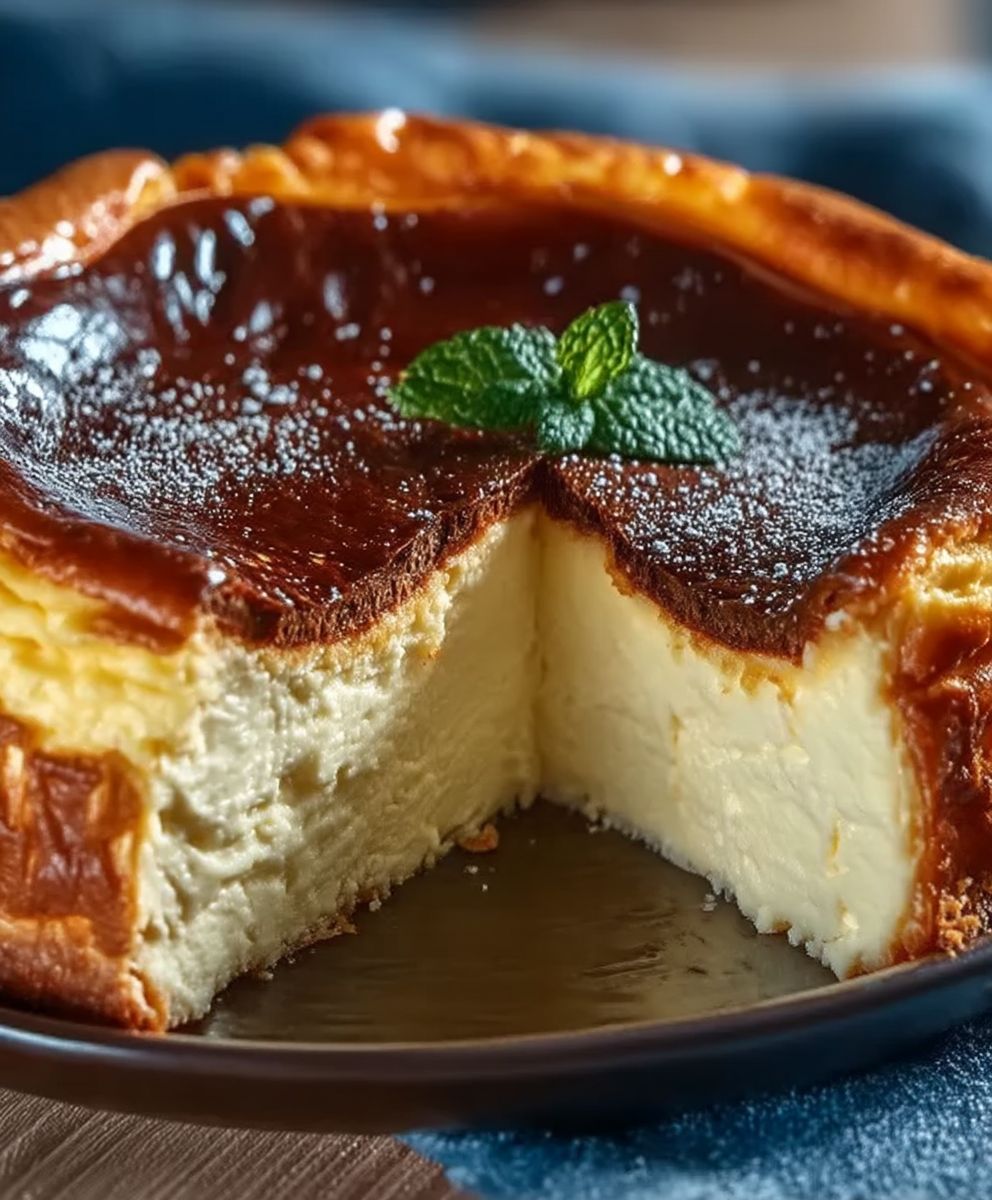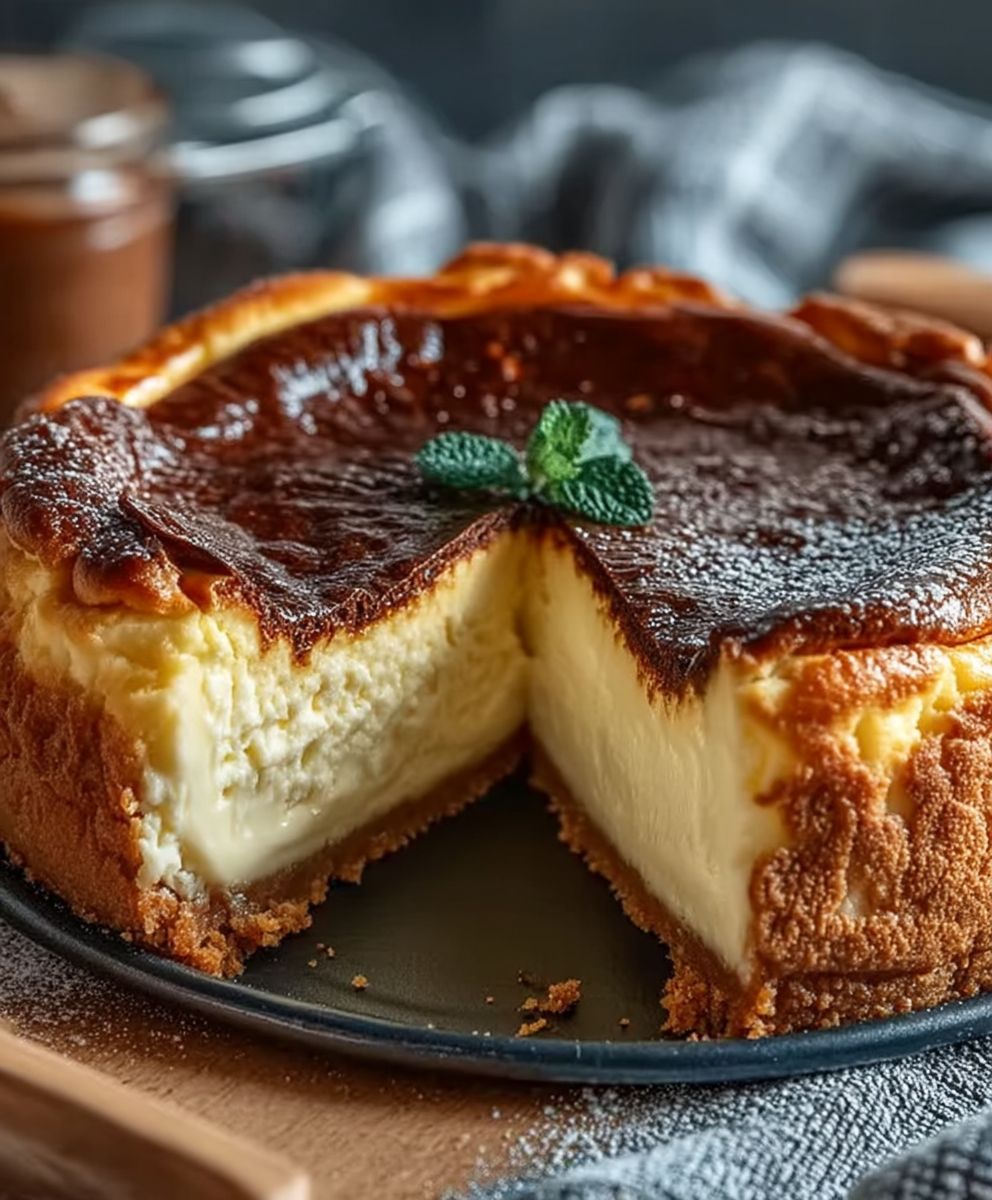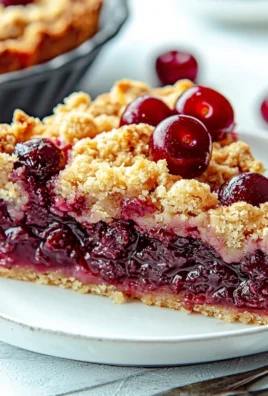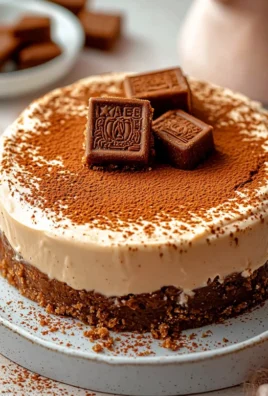Basque Cheesecake Loaf Pan: Prepare to be amazed! Forget everything you think you know about cheesecake. This isn’t your grandma’s meticulously smooth, perfectly even dessert. We’re diving headfirst into the wonderfully rustic world of Basque Cheesecake, but with a twist we’re baking it in a loaf pan!
Originating from the Basque region of Spain, this cheesecake is intentionally burnt on top, creating a deeply caramelized, almost savory crust that contrasts beautifully with the creamy, custardy interior. It’s a testament to embracing imperfections and celebrating bold flavors. The beauty of this dessert lies in its simplicity and the unexpected depth of flavor that comes from the high-heat baking process.
Why do people adore Basque Cheesecake? It’s the delightful textural contrast the slightly bitter, almost burnt exterior gives way to a luxuriously smooth and creamy center. The flavor is rich and decadent, yet surprisingly light. And now, baking it in a Basque Cheesecake Loaf Pan makes it even easier to slice and serve, perfect for sharing (or not!). Plus, let’s be honest, the slightly “imperfect” look is incredibly forgiving, making it a stress-free dessert to bake. So, grab your loaf pan, and let’s embark on this delicious adventure together!
Ingredients:
- Cream Cheese: 24 ounces (680g), full-fat, softened to room temperature. This is crucial for the creamy texture! Don’t skimp on the fat content.
- Granulated Sugar: 1 1/4 cups (250g). Adjust slightly to your sweetness preference.
- Large Eggs: 4, at room temperature. Room temperature eggs emulsify better and contribute to a smoother batter.
- Heavy Cream: 1 1/2 cups (360ml). Again, full-fat is key for that signature Basque cheesecake richness.
- All-Purpose Flour: 2 tablespoons (16g). Just a touch to provide a bit of structure.
- Vanilla Extract: 1 teaspoon. Enhances the overall flavor profile.
- Salt: 1/4 teaspoon. Balances the sweetness and brings out the other flavors.
- Lemon Zest: 1 teaspoon (optional). Adds a subtle citrusy note that complements the caramelized flavor.
Preparing the Batter:
- Preheat your oven to 400°F (200°C). This high temperature is essential for achieving the characteristic dark, caramelized top. Make sure your oven is properly preheated before you start baking.
- Prepare your loaf pan. Generously grease a 9×5 inch loaf pan with butter or cooking spray. Then, line it with parchment paper, leaving an overhang on all sides. This overhang will act as handles to easily lift the cheesecake out after baking. The parchment paper should be crumpled before placing it in the pan. Crumpling the parchment helps it conform to the shape of the pan and creates those beautiful, rustic wrinkles on the sides of the cheesecake.
- Beat the cream cheese. In a large bowl, using an electric mixer (stand mixer or hand mixer), beat the softened cream cheese on medium speed until smooth and creamy. This usually takes about 2-3 minutes. Make sure there are no lumps! Lumpy cream cheese will result in a lumpy cheesecake.
- Add the sugar. Gradually add the granulated sugar to the cream cheese, beating on medium speed until well combined and the mixture is light and fluffy. Scrape down the sides of the bowl as needed to ensure everything is evenly incorporated.
- Incorporate the eggs. Add the eggs one at a time, beating well after each addition. Make sure each egg is fully incorporated before adding the next. Overmixing at this stage can incorporate too much air, which can cause the cheesecake to puff up too much and then deflate.
- Add the heavy cream. Gradually pour in the heavy cream, beating on low speed until just combined. Be careful not to overmix. Overmixing can lead to a less tender cheesecake.
- Add the flour, vanilla extract, salt, and lemon zest (if using). Sift the flour over the batter to prevent lumps. Add the vanilla extract, salt, and lemon zest (if using). Gently fold everything together until just combined. Do not overmix! A few streaks of flour are okay.
Baking Process:
- Pour the batter into the prepared loaf pan. Pour the cheesecake batter into the parchment-lined loaf pan. Spread it evenly.
- Bake. Bake in the preheated oven for 50-60 minutes, or until the top is deeply caramelized and the center is still slightly jiggly. The cheesecake should be very dark brown, almost burnt-looking, on top. This is what gives it its unique flavor. Don’t be afraid of the dark color!
- Cool. Turn off the oven and crack the oven door slightly. Let the cheesecake cool in the oven for 1 hour. This gradual cooling helps prevent cracking.
- Chill. Remove the cheesecake from the oven and let it cool completely at room temperature. Then, cover it with plastic wrap and chill in the refrigerator for at least 4 hours, or preferably overnight. This chilling time is crucial for the cheesecake to set properly and develop its flavor.
Serving and Storage:
- Unmold the cheesecake. Once the cheesecake is thoroughly chilled, use the parchment paper overhang to carefully lift it out of the loaf pan.
- Slice and serve. Slice the cheesecake into thick slices and serve chilled. The center should be creamy and slightly gooey.
- Optional toppings. While Basque cheesecake is delicious on its own, you can also serve it with fresh berries, a drizzle of honey, or a dusting of powdered sugar.
- Storage. Store leftover cheesecake in an airtight container in the refrigerator for up to 3-4 days. The flavor may even improve slightly after a day or two!
Tips for Success:
- Use full-fat cream cheese and heavy cream. This is essential for the rich, creamy texture and signature flavor of Basque cheesecake. Reduced-fat versions will not yield the same results.
- Soften the cream cheese to room temperature. This will ensure a smooth and lump-free batter. If the cream cheese is too cold, it will be difficult to beat and may result in a lumpy cheesecake.
- Don’t overmix the batter. Overmixing can incorporate too much air, which can cause the cheesecake to puff up too much and then deflate. It can also lead to a tougher texture.
- Don’t be afraid of the dark color. The deeply caramelized top is what gives Basque cheesecake its unique flavor. It should be almost burnt-looking.
- Chill the cheesecake thoroughly. This is crucial for the cheesecake to set properly and develop its flavor. It’s best to chill it overnight.
- Use high heat. The high baking temperature is what creates the characteristic dark, caramelized top.
- Crumple the parchment paper. Crumpling the parchment paper before lining the pan helps it conform to the shape of the pan and creates those beautiful, rustic wrinkles on the sides of the cheesecake.
- Adjust baking time as needed. Ovens vary, so you may need to adjust the baking time slightly. The cheesecake is done when the top is deeply caramelized and the center is still slightly jiggly.
- Let it cool gradually. Cooling the cheesecake gradually in the oven helps prevent cracking.
Troubleshooting:
- Cracked Cheesecake: Cracking can be caused by several factors, including overbaking, rapid temperature changes, or overmixing the batter. To prevent cracking, avoid overbaking, let the cheesecake cool gradually in the oven, and don’t overmix the batter.
- Lumpy Cheesecake: Lumpy cheesecake is usually caused by using cold cream cheese. Make sure the cream cheese is softened to room temperature before beating it.
- Cheesecake is too dense: Using too much flour or overmixing the batter can result in a dense cheesecake. Use the correct amount of flour and don’t overmix the batter.
- Cheesecake is not setting: Not chilling the cheesecake long enough can prevent it from setting properly. Chill the cheesecake for at least 4 hours, or preferably overnight.
- Cheesecake is too sweet: Adjust the amount of sugar to your preference. You can reduce the amount of sugar slightly without affecting the texture of the cheesecake.
Variations:
- Chocolate Basque Cheesecake: Add 2-3 tablespoons of cocoa powder to the batter along with the flour.
- Lemon Basque Cheesecake: Add the zest of 2 lemons to the batter.
- Espresso Basque Cheesecake: Add 1-2 teaspoons of instant espresso powder to the batter.
- Berry Basque Cheesecake: Swirl in some fresh or frozen berries into the batter before baking.

Conclusion:
So, there you have it! This Basque Cheesecake Loaf Pan recipe is truly a game-changer, and I wholeheartedly believe it deserves a spot in your regular baking rotation. Why? Because it delivers all the intensely caramelized, custardy goodness of a traditional Basque cheesecake, but in a convenient and utterly charming loaf format. Forget fussy water baths and worrying about cracks this method is practically foolproof, making it perfect for both seasoned bakers and those just starting their cheesecake journey.
This isn’t just cheesecake; it’s an experience. The deeply browned exterior gives way to a luxuriously soft and creamy interior that melts in your mouth. The slightly burnt notes add a complex, almost smoky flavor that perfectly complements the rich dairy. It’s a symphony of textures and tastes that will leave you craving more.
But the best part? Its versatility! While it’s absolutely divine served simply as is, a few thoughtful additions can elevate it even further. A dollop of whipped cream and a scattering of fresh berries (raspberries or strawberries are particularly lovely) create a beautiful and refreshing contrast. For a more decadent treat, drizzle with salted caramel sauce or a rich chocolate ganache. Or, if you’re feeling adventurous, try infusing the batter with a touch of citrus zest (lemon or orange would be fantastic) or a splash of your favorite liqueur (Amaretto or Frangelico would add a delightful nutty note).
And speaking of variations, consider experimenting with different flavor profiles. A swirl of Nutella or peanut butter would be a welcome addition for those with a sweet tooth. Or, for a more sophisticated twist, try incorporating a hint of lavender or rosemary into the batter. The possibilities are truly endless!
Serving suggestions? This Basque Cheesecake Loaf Pan is perfect for any occasion. It’s elegant enough for a dinner party dessert, yet casual enough for a weekend brunch. Slice it up and serve it with coffee or tea for a delightful afternoon treat. It also makes a wonderful gift for friends and family. Imagine showing up to a gathering with this golden beauty you’re guaranteed to be the star of the show!
I’ve poured my heart into perfecting this recipe, and I’m confident that you’ll love it as much as I do. It’s a simple yet impressive dessert that’s sure to become a crowd-pleaser. So, what are you waiting for? Preheat your oven, gather your ingredients, and get ready to bake up a slice of heaven.
I’m so excited for you to try this recipe! And most importantly, I want to hear about your experience. Did you make any modifications? What were your favorite toppings? Did you impress your friends and family? Share your photos and stories in the comments below. I can’t wait to see your creations! Happy baking, and enjoy every delicious bite of your homemade Basque Cheesecake Loaf Pan! Let me know if you have any questions, and I’ll do my best to help.
Basque Cheesecake Loaf Pan: The Ultimate Guide & Recipe
A rustic and intensely flavored Basque Burnt Cheesecake baked in a loaf pan. Characterized by its deeply caramelized top and creamy, slightly gooey center.
Ingredients
- 24 ounces (680g) full-fat cream cheese, softened to room temperature
- 1 1/4 cups (250g) granulated sugar
- 4 large eggs, at room temperature
- 1 1/2 cups (360ml) heavy cream
- 2 tablespoons (16g) all-purpose flour
- 1 teaspoon vanilla extract
- 1/4 teaspoon salt
- 1 teaspoon lemon zest (optional)
Instructions
- Preheat: Preheat your oven to 400°F (200°C).
- Prepare Pan: Generously grease a 9×5 inch loaf pan with butter or cooking spray. Line with parchment paper, leaving an overhang on all sides. Crumple the parchment before placing it in the pan.
- Beat Cream Cheese: In a large bowl, beat the softened cream cheese on medium speed until smooth and creamy (2-3 minutes).
- Add Sugar: Gradually add the granulated sugar to the cream cheese, beating on medium speed until well combined and the mixture is light and fluffy. Scrape down the sides of the bowl as needed.
- Incorporate Eggs: Add the eggs one at a time, beating well after each addition.
- Add Heavy Cream: Gradually pour in the heavy cream, beating on low speed until just combined.
- Add Dry Ingredients: Sift the flour over the batter. Add the vanilla extract, salt, and lemon zest (if using). Gently fold everything together until just combined. A few streaks of flour are okay.
- Pour into Pan: Pour the cheesecake batter into the parchment-lined loaf pan. Spread it evenly.
- Bake: Bake in the preheated oven for 50-60 minutes, or until the top is deeply caramelized and the center is still slightly jiggly.
- Cool in Oven: Turn off the oven and crack the oven door slightly. Let the cheesecake cool in the oven for 1 hour.
- Chill: Remove the cheesecake from the oven and let it cool completely at room temperature. Then, cover it with plastic wrap and chill in the refrigerator for at least 4 hours, or preferably overnight.
- Unmold: Once the cheesecake is thoroughly chilled, use the parchment paper overhang to carefully lift it out of the loaf pan.
- Serve: Slice the cheesecake into thick slices and serve chilled.
Notes
- Key to Success: Use full-fat cream cheese and heavy cream for the best texture and flavor.
- Room Temperature: Ensure cream cheese and eggs are at room temperature for a smooth batter.
- Don’t Overmix: Avoid overmixing the batter to prevent a tough cheesecake.
- Embrace the Burn: The dark, caramelized top is essential for the unique flavor.
- Chill Time: Chilling is crucial for the cheesecake to set properly.
- Parchment Paper: Crumpling the parchment paper helps it conform to the shape of the pan and creates those beautiful, rustic wrinkles on the sides of the cheesecake.
- Storage: Store leftover cheesecake in an airtight container in the refrigerator for up to 3-4 days.




